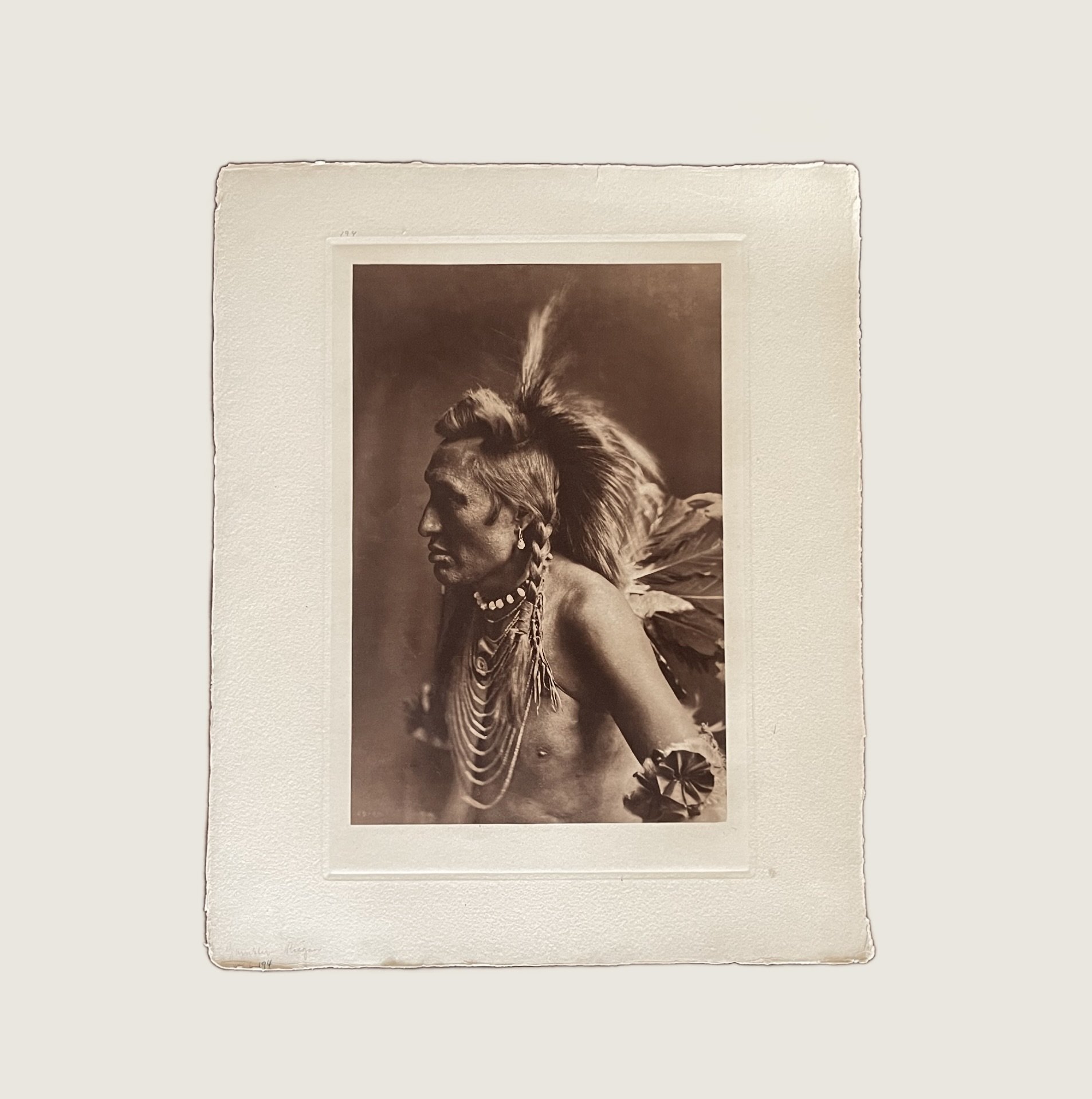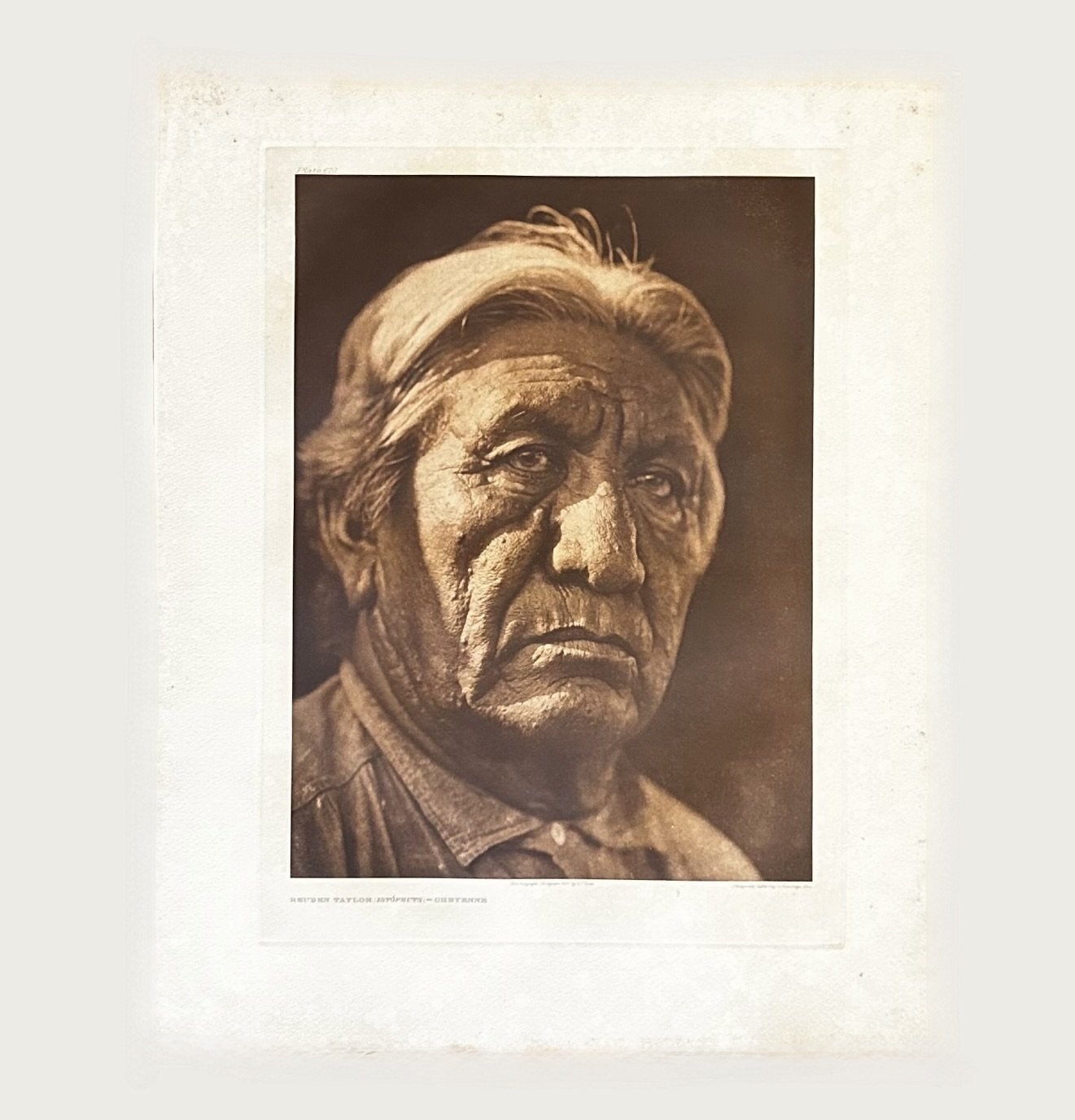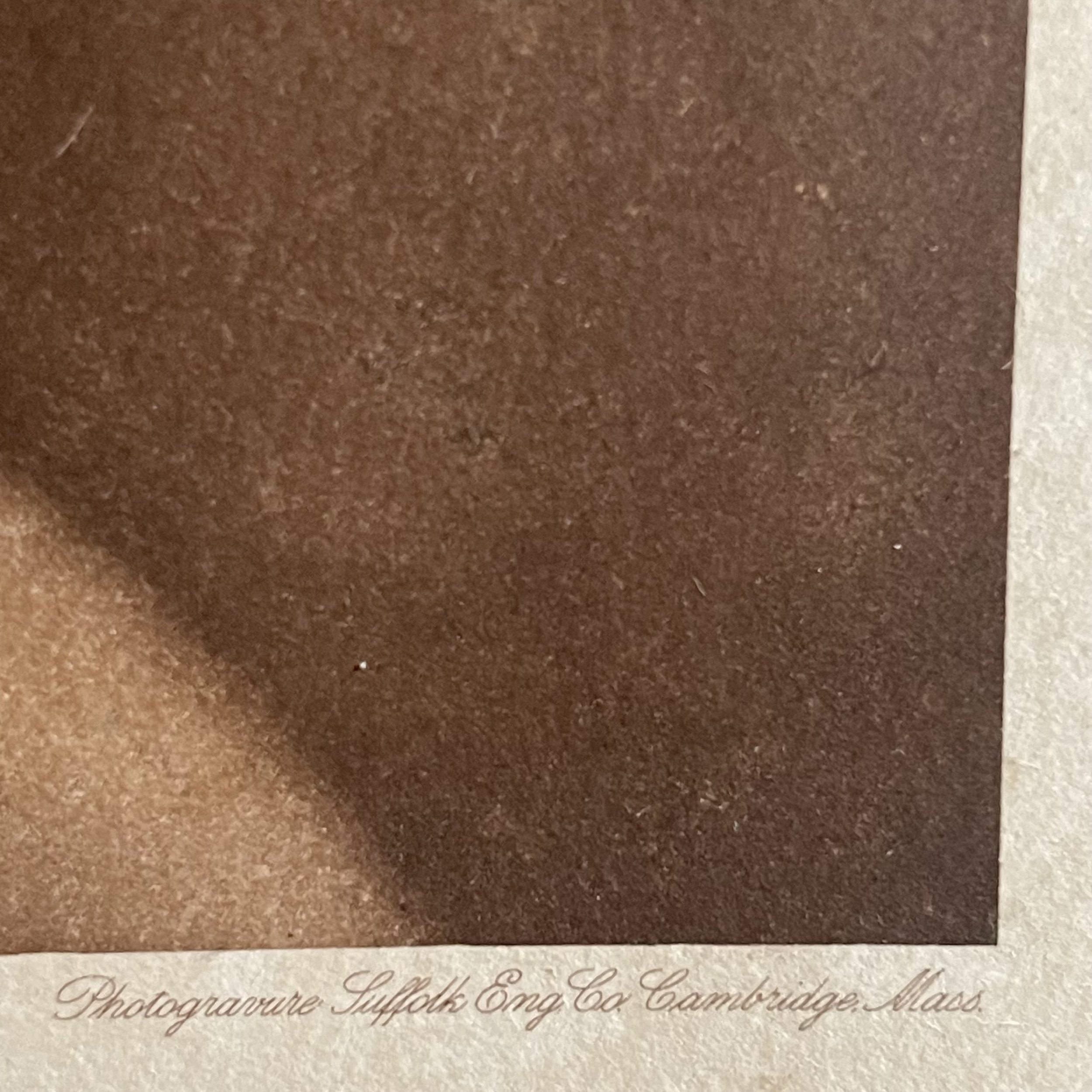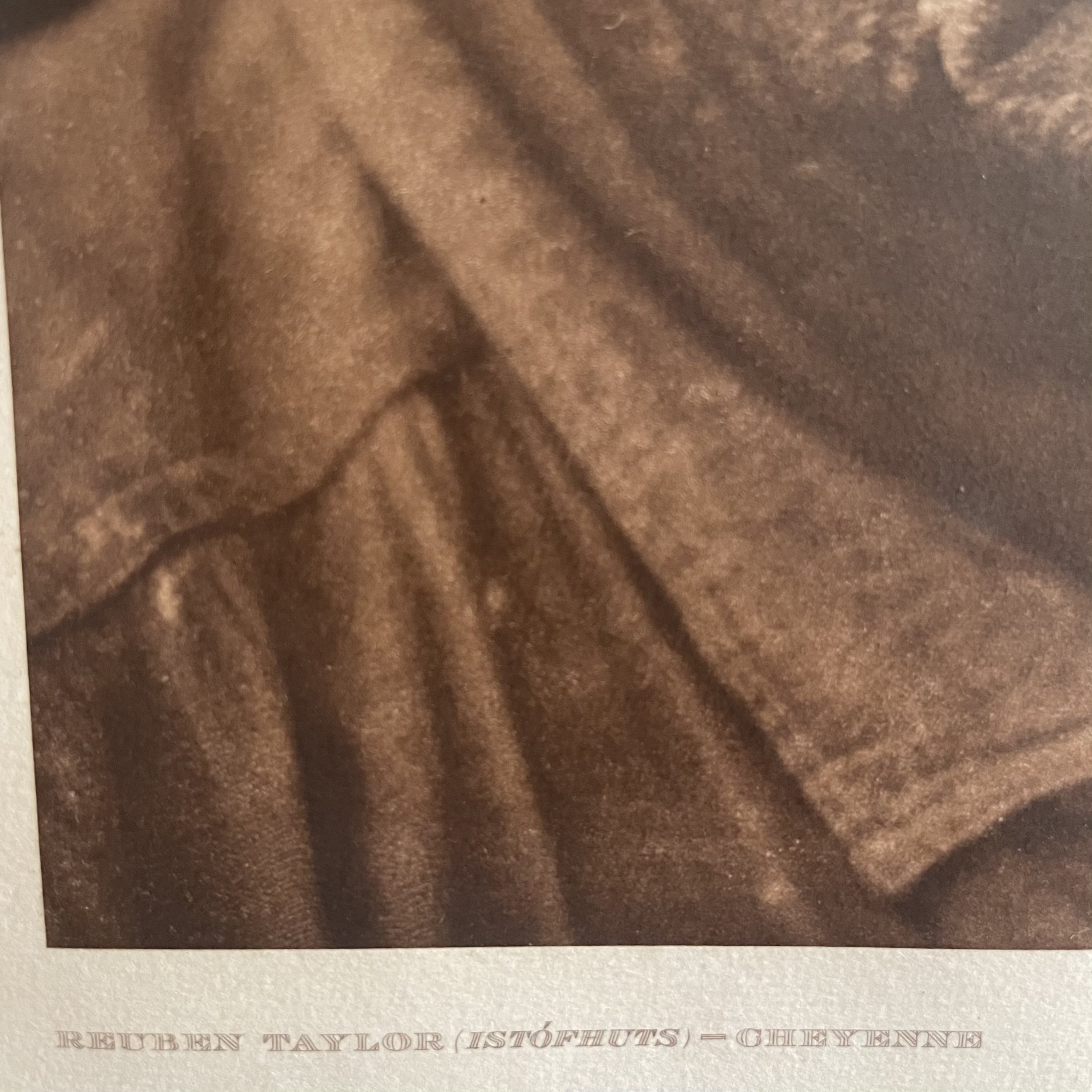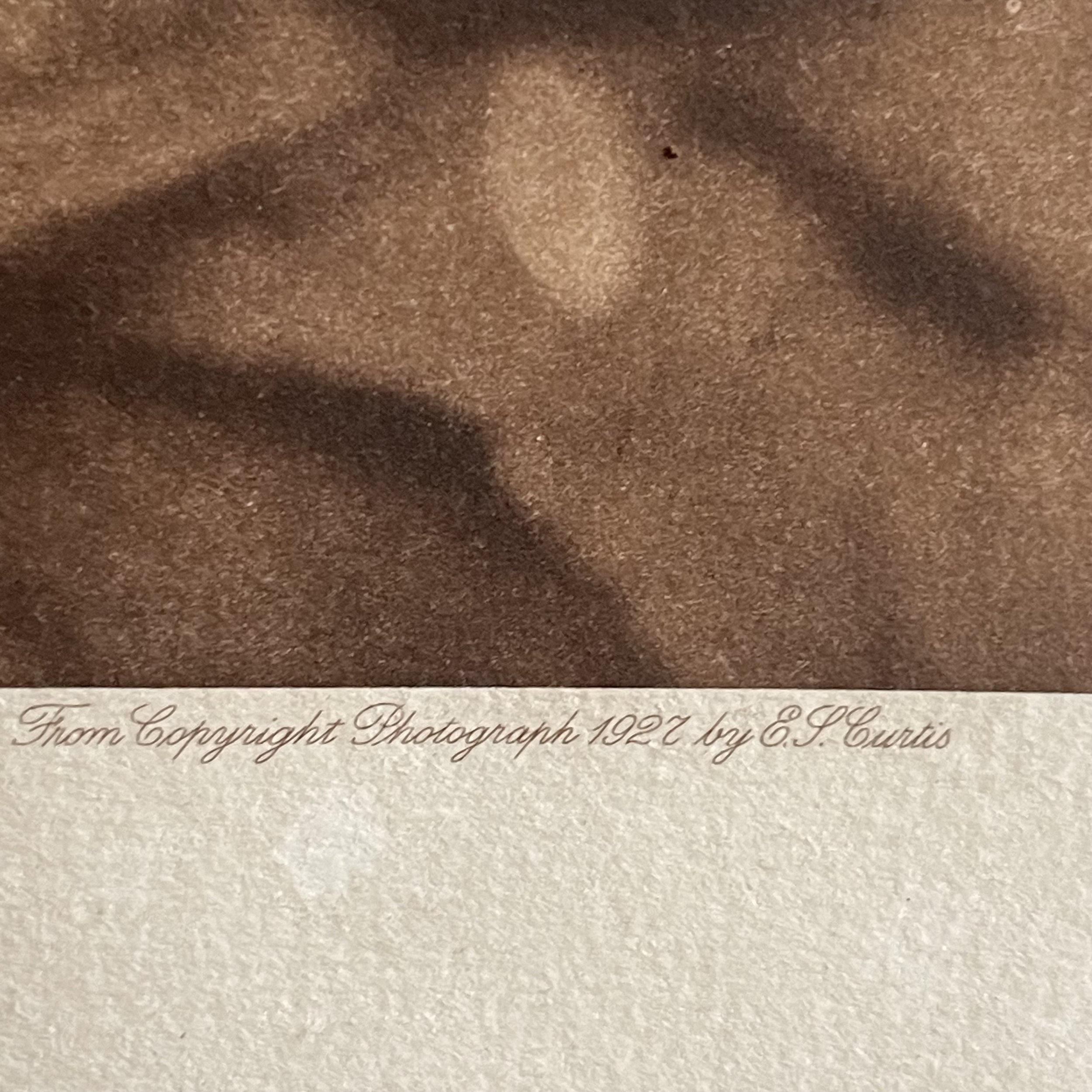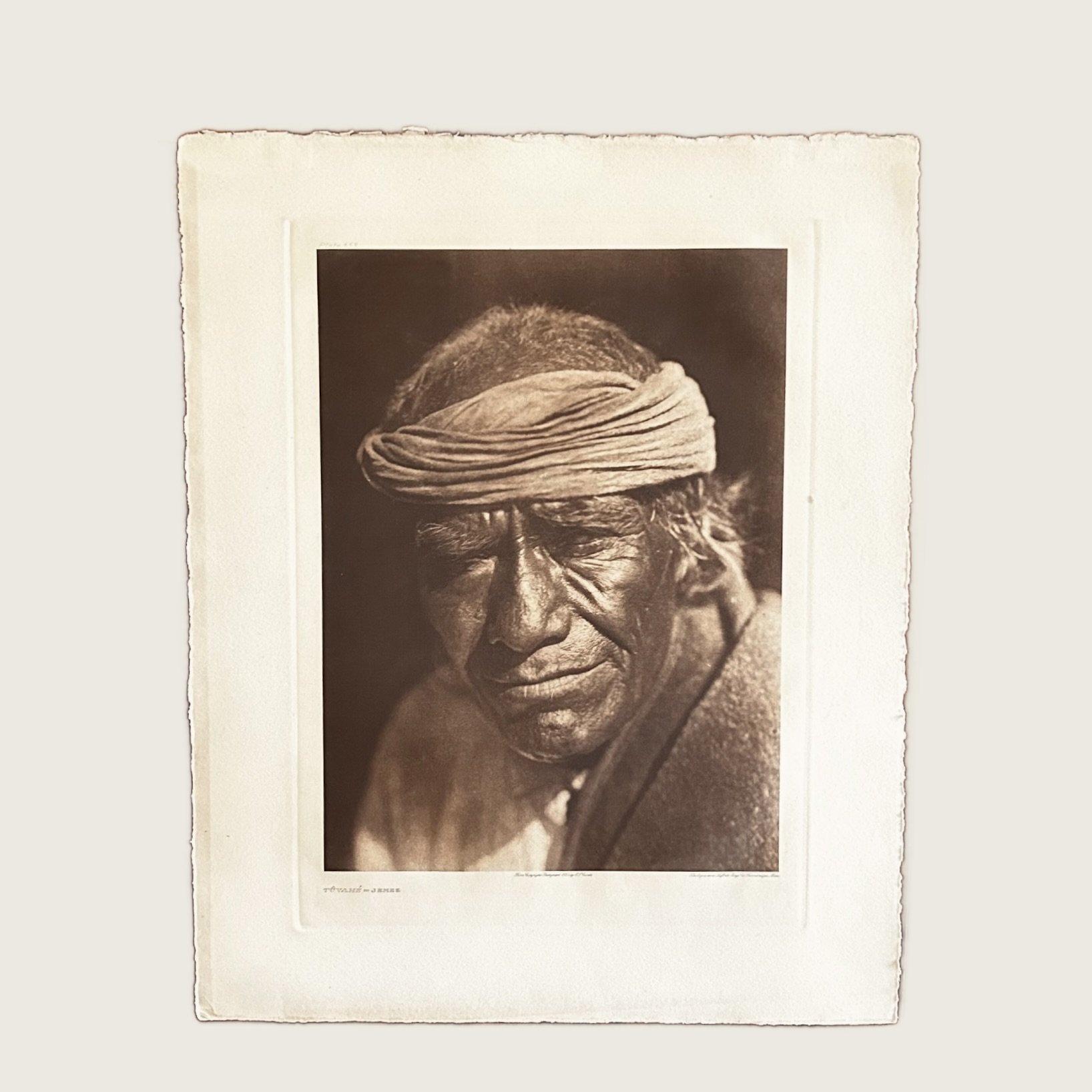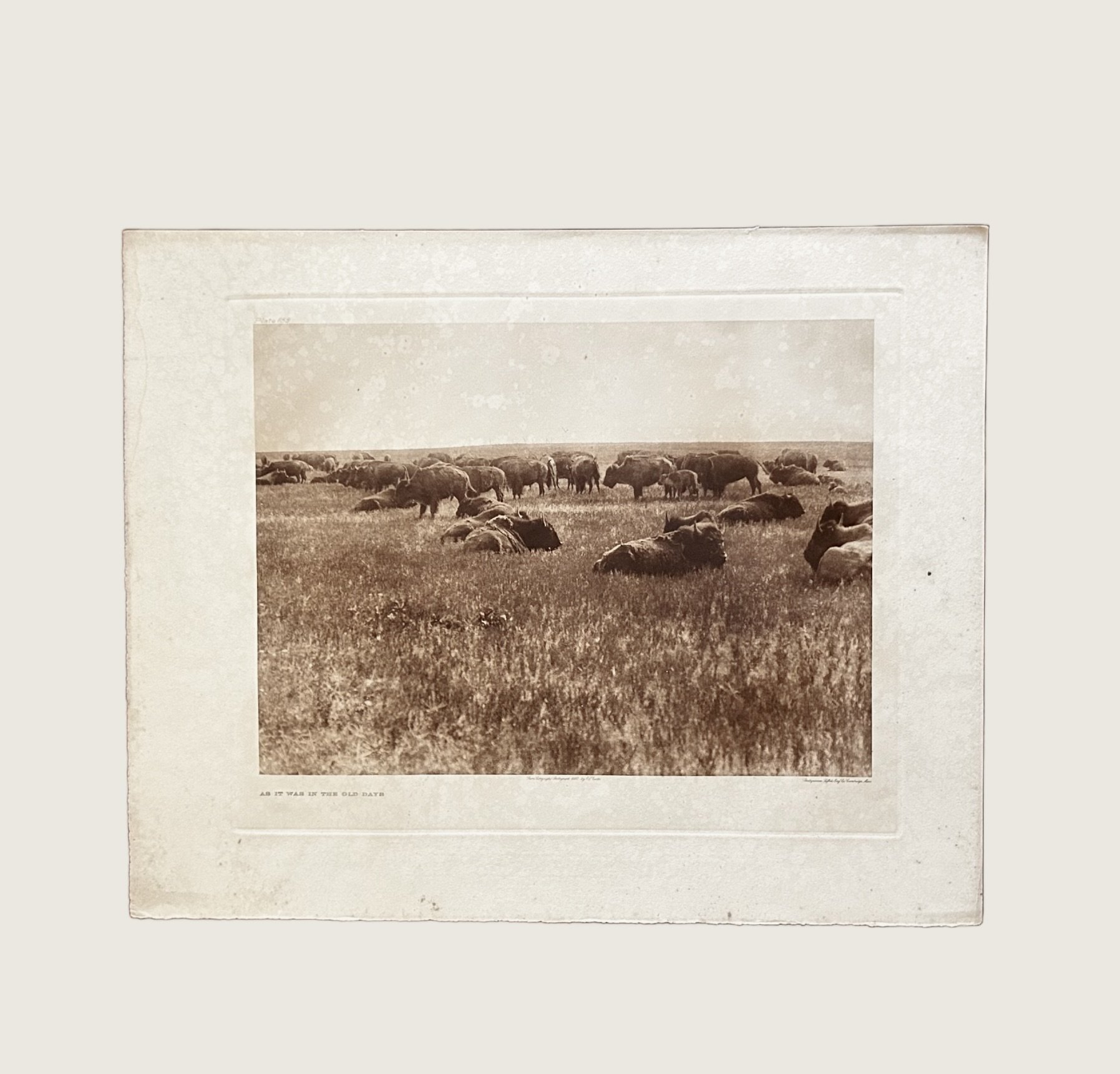 Image 1 of 4
Image 1 of 4

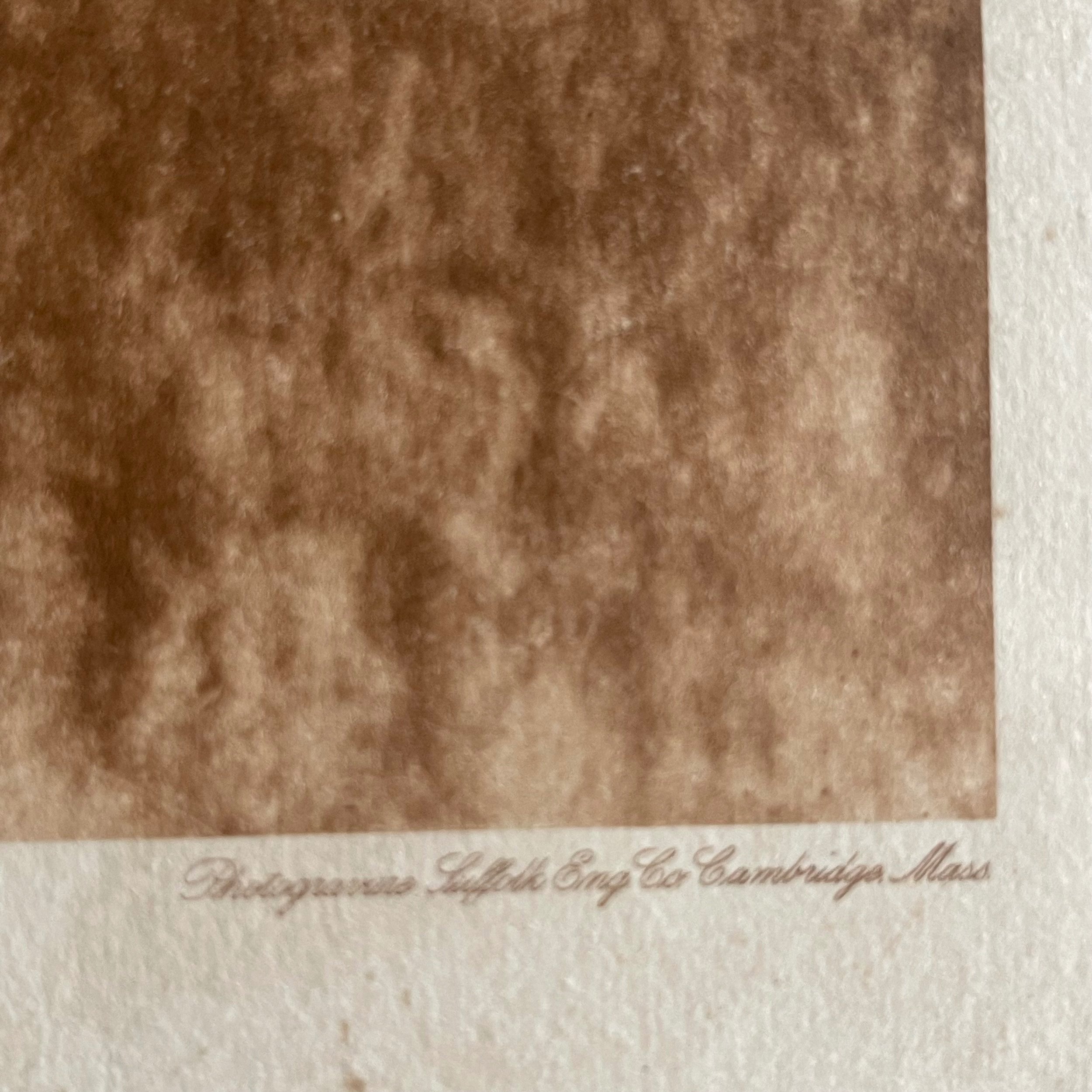 Image 2 of 4
Image 2 of 4

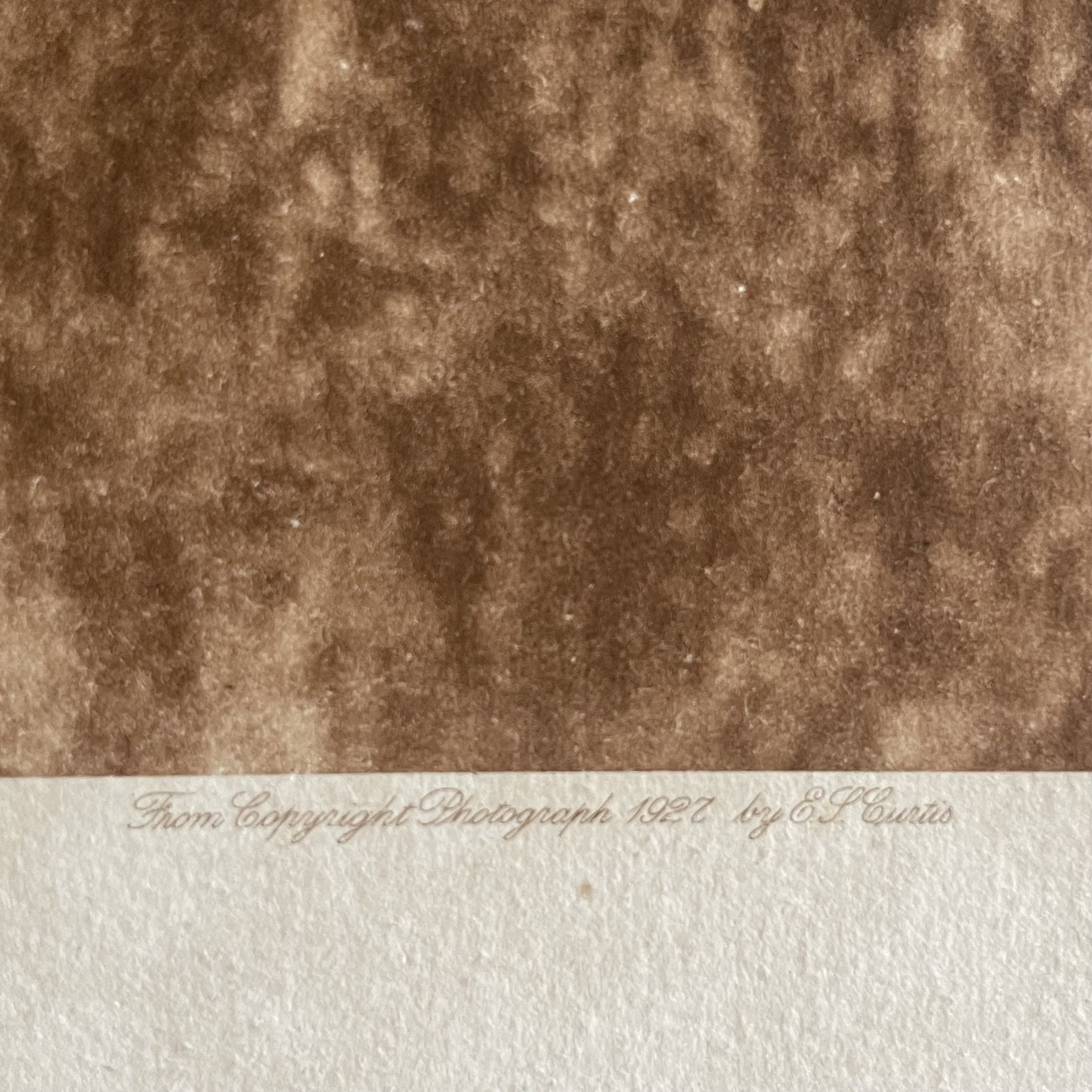 Image 3 of 4
Image 3 of 4

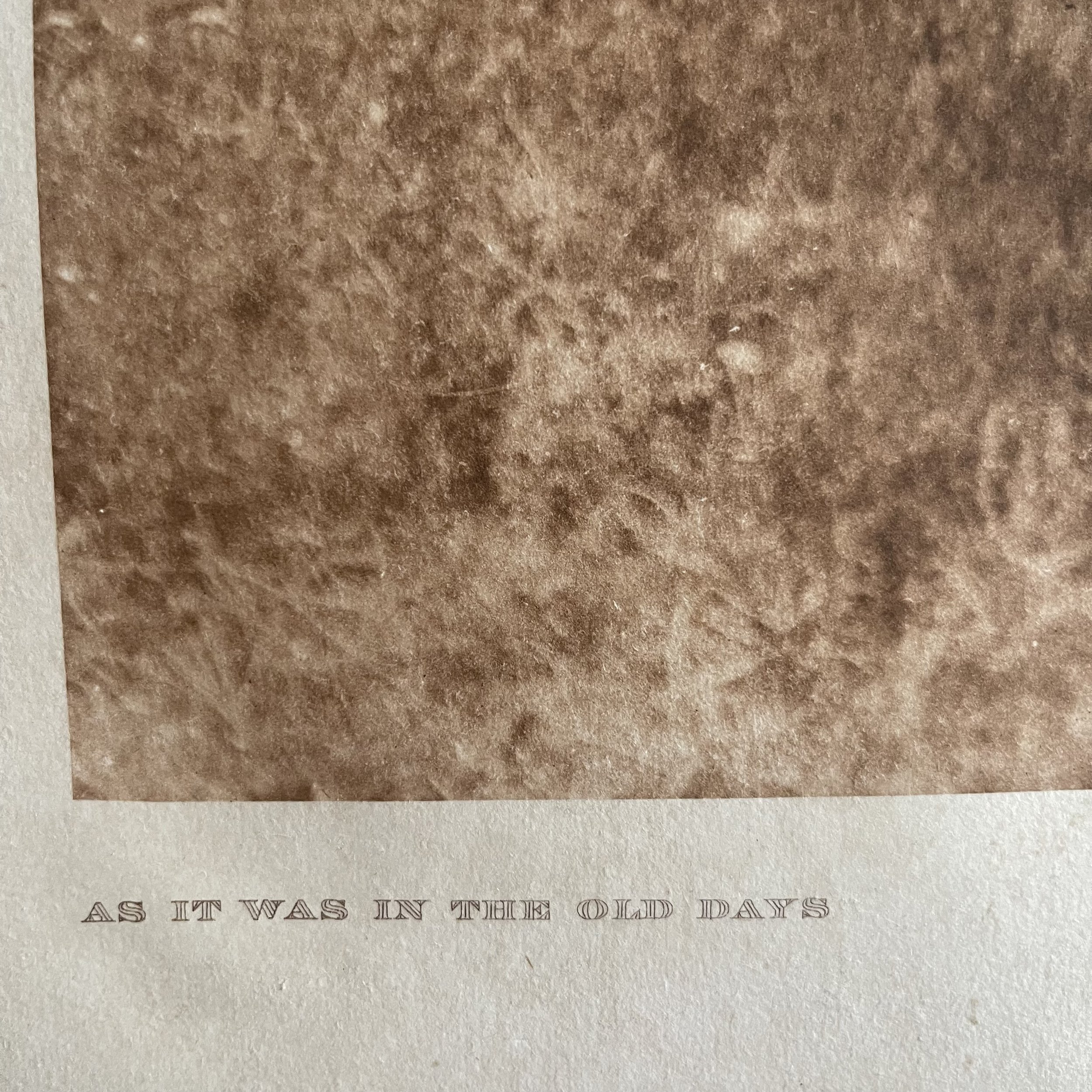 Image 4 of 4
Image 4 of 4





Edward S Curtis (1868-1952) As It Was In The Old Days, 1927
Edward S Curtis (1868-1952)
Title: As It Was In The Old Days
Plate: 652
Portfolio: Volume 19
Printer: Suffolk Eng. Co. Cambridge Mass
Medium: Photogravure
Date: 1927
Dimensions:
Sheet: W 21 ½ H 17 6/16
Image: W15 ½ H 11 ¼
This image captures a serene scene of a herd of bison grazing on the open plains, symbolising the deep connection between Native American communities and the natural world which Curtis tirelessly strove to convey in his work.
The title reflects Curtis's drive to preserve the heritage of these communities during a time of rapid modernisation and significant change, to capture this moment of American tribes and their relationship to the land before it was, as he put it, ‘lost forever’.
Edward S Curtis (1868-1952)
Title: As It Was In The Old Days
Plate: 652
Portfolio: Volume 19
Printer: Suffolk Eng. Co. Cambridge Mass
Medium: Photogravure
Date: 1927
Dimensions:
Sheet: W 21 ½ H 17 6/16
Image: W15 ½ H 11 ¼
This image captures a serene scene of a herd of bison grazing on the open plains, symbolising the deep connection between Native American communities and the natural world which Curtis tirelessly strove to convey in his work.
The title reflects Curtis's drive to preserve the heritage of these communities during a time of rapid modernisation and significant change, to capture this moment of American tribes and their relationship to the land before it was, as he put it, ‘lost forever’.
Edward S Curtis (1868-1952)
Title: As It Was In The Old Days
Plate: 652
Portfolio: Volume 19
Printer: Suffolk Eng. Co. Cambridge Mass
Medium: Photogravure
Date: 1927
Dimensions:
Sheet: W 21 ½ H 17 6/16
Image: W15 ½ H 11 ¼
This image captures a serene scene of a herd of bison grazing on the open plains, symbolising the deep connection between Native American communities and the natural world which Curtis tirelessly strove to convey in his work.
The title reflects Curtis's drive to preserve the heritage of these communities during a time of rapid modernisation and significant change, to capture this moment of American tribes and their relationship to the land before it was, as he put it, ‘lost forever’.

